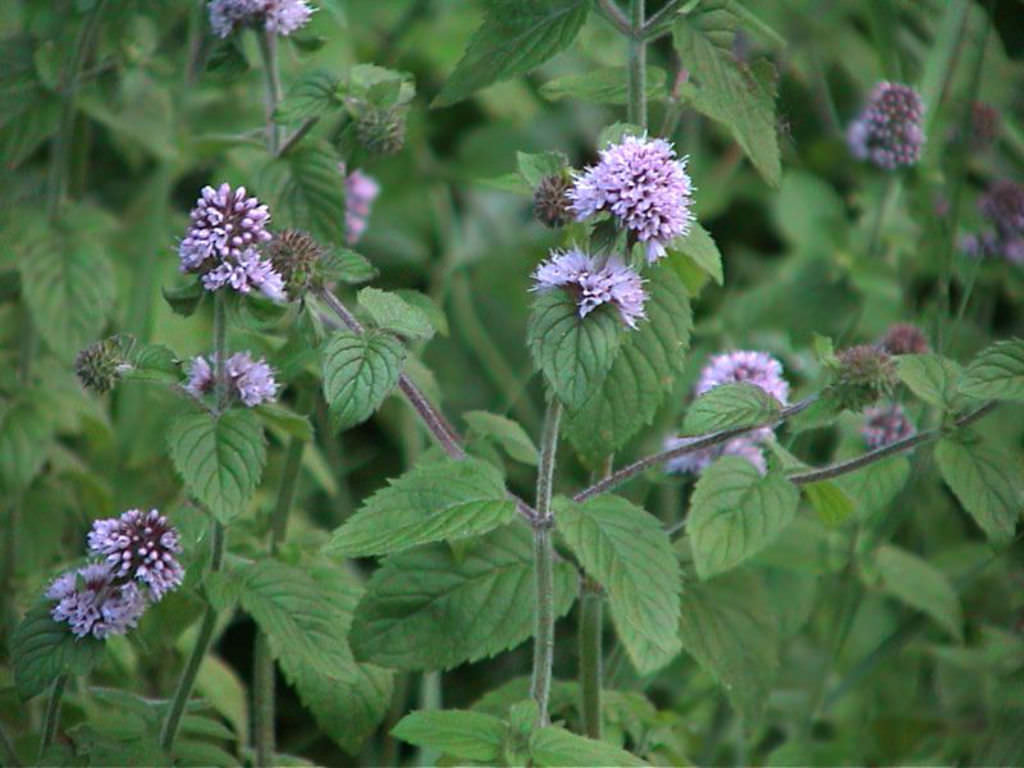Wild mint is a fragrant mint family herb that grows wild in much of North America. It is easy to spot because it has square stems, fragrant leaves, and pale purple flowers.
In this article, we’ll explore the key visual characteristics to identify wild mint. We’ll also showcase pictures and descriptions to help you recognize this minty plant.
An Overview of Wild Mint’s Appearance
Wild mint, also known as field mint or corn mint, is a perennial plant that grows from an underground stem every spring. Here are some of its defining features .
- Grows 1-2 feet tall on square, rigid green or reddish stems
- Leaves are opposite, toothed, egg-shaped with pointed tips
- Underside of leaves and stems are hairy
- Leaves are aromatic when crushed
- Lavender, pink, or white flowers bloom in clusters mid-summer
Now let’s explore the specific characteristics and images that can help in identifying wild mint
Stems – Square with Hair
One quick way to recognize wild mint is by its square-shaped, upright stems. Running your finger along the stem reveals it has four distinct sides rather than being round.
The stems also have fine hairs covering them.
Leaves – Opposite, Toothed, and Hairy
Wild mint leaves are:
- Opposite – Grow in pairs on either side of the stem
- Elliptic – Oval, egg-shaped
- Toothed – Have serrated edges
- Pointed – Come to a tip
- Aromatic – Release a minty smell when crushed
The undersides of the leaves have a fuzzy texture from small hairs.
Flowers – Pale Purple Spikes
From mid to late summer, wild mint produces flowers clustered together on spikes emerging from the leaf joints.
The tubular flowers have 4 petals and range in color from:
- Pale purple
- Lavender
- Pink
- White
One petal has a distinct lobe, helping distinguish it from other mints.
Where It Grows
Look for wild mint growing in moist soils and partially shaded areas, such as:
- Stream banks
- Wet meadows
- Marshes
- Low woods
It spreads vigorously via underground rhizomes once established.
Smell for Identification
The most foolproof way to confirm you’ve found wild mint is by smell. Crush a leaf or stem and sniff – the distinct minty aroma is a dead giveaway.
Common Questions About Identifying Wild Mint
How can I tell wild mint apart from other mint plants?
A pale purple flower and hairy stems or leaves set wild mint apart from other mints like spearmint and peppermint. It also has a less pronounced minty fragrance.
What color are wild mint blooms – pink, purple, or white?
The flowers of wild mint can range from pale purple to pink to sometimes white. The tubular blooms have 4 petals with one lobe, and they grow in dense clusters on spikes.
Do the leaves have rounded or pointed tips?
Wild mint has oval (elliptical) leaves with cuts along the edges. Instead of being rounded off, the leaf’s end comes to a clear point.
Is wild mint safe to eat?
Yes, wild mint is edible and is used for teas, culinary dishes, and medicinal purposes. It has a minty aroma and flavor similar to other edible mints.
Does wild mint spread invasive?
Wild mint can spread vigorously via underground rhizomes. It can grow invasive in some areas, so plant it in containers rather than directly in garden beds to control spread.
Conclusion
Being able to identify wild mint provides opportunities to use this abundant herb. Check moist shaded areas and enjoy the signature square stems, aromatic leaves, and pale flowers of this refreshing plant.

Why they Matter to Us
- Wild mint can be eaten and is a good food to find while foraging. Menthol, the chemical that gives it its unique smell and taste, is used in a lot of different products.
- It is important for pollinators to eat mint because it flowers all summer long.
- Mint leaves can be used naturally to treat everything from headaches to stress.
- You can use the mint plant or its leaves to get rid of pests or freshen the air. They also look nice as a ground cover in gardens.
Wild mint (Mentha arvensis)
This forb is distinctive and reminds many people of refreshing rejuvenation during hot summer days. Wild mint leaves give food a sharp, fresh taste when they are cooked. Crushed leaves give off a strong mint smell. Keep your eyes open for this strong smelling plant as you walk through moist lowlands or the edges of riparian areas.

